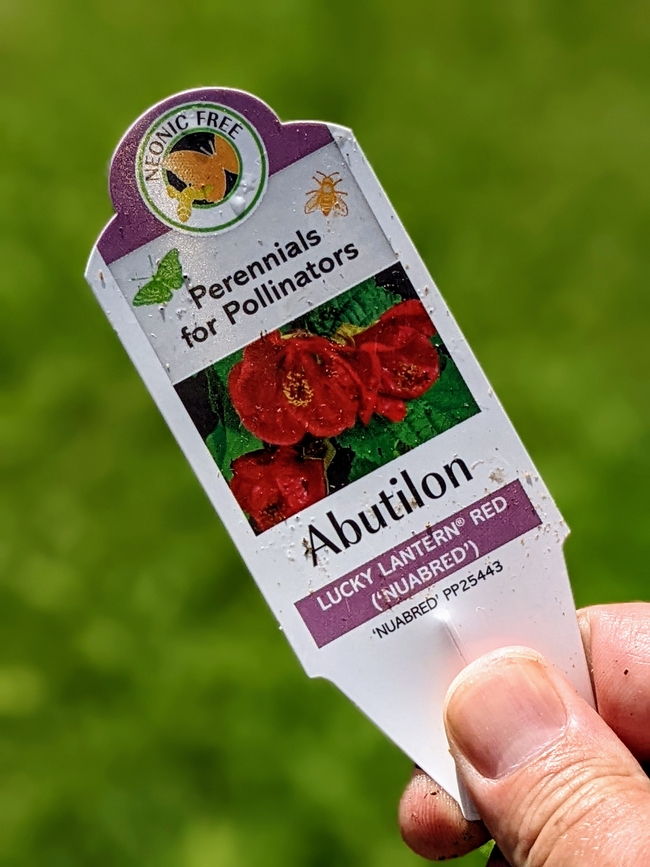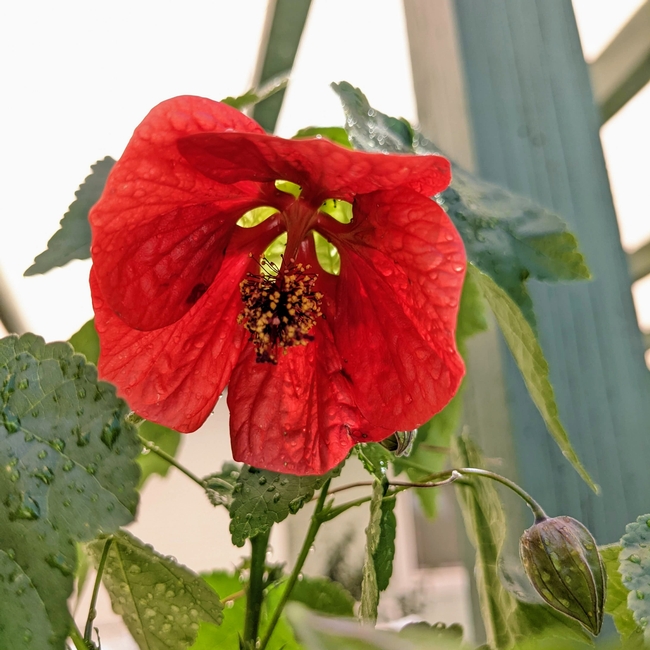Every year I try to plant something I haven't grown before. I skipped raising vegetables this year, but I planted some red abutilons that I bought on a whim so that I would still feel a little bit like a gardener in spite of taking the year off.
The variety I purchased was a patented hybrid called Lucky Lantern Red®. Botanists and lawyers would call these Abutilon x hybrida ‘Nuabred' PP25443, but that name won't sell plants! Abutilons have several common names but “flowering maple” is often used in California. Since most of these common names are just as many syllables as the botanical name I don't tend to use any of them. Abutilons are in the same family as mallow, hibiscus, cotton, and okra. (Malvaceae)
Abutilons were once popular with plant collectors, but less so now. When I was young I usually encountered them as houseplants. I thought they were cool because they often had a virus that causes them to have intriguing, variegated leaf patterns, only I didn't know that was really just a disease symptom. It turns out mosaic viruses are not really a topic covered in middle-school science class.
Maybe this interesting plant is gaining in popularity again. After all, I found it in Bishop of all places! Several recent varieties are on the market that make for colorful additions to landscapes, with bigger and brighter flowers than older types.
We can grow abutilon in our area, but this being the Eastern Sierra, growing it comes with some caveats. For one thing, you can mostly ignore its label. Plant it green-side-up and keep it watered and you'll be fine. Pinching the tips will encourage more branching.

Many members of this family love the heat. Abutilons tend to like it cooler. Bright sun is great, but mine look stressed when the temperature gets above 90°F in the sun. Here's a good rule: abutilons like the same conditions that make tomatoes happiest.
In May, I planted 4 of them. My two plants that get some mild shade in late afternoon are about 2 feet tall and have a somewhat bushy form. They are about the same size as my miniature roses. The one on my shaded porch is OK and looks better than I expected. The plant in full sun all day that gets very hot: not so much. It's about 12” tall and looks a lot like Bill the Cat. All the plants, no matter where they are planted, are covered with pendulous, red flowers about 2-1/2 inches in diameter.
Although whiteflies are not uncommon on abutilons, I haven't seen too many pests on my plants this season, except for the one planted in full shade which has a few, but not enough to fret about. According to the label they are supposed to be pollinator friendly. I haven't seen any insect activity around the flowers, but hummingbirds have been checking them out all summer.
Beside looking a little wilted in the heat of the afternoon, they have mostly been free of problems. The only problem I have seen on all plants is some mild magnesium deficiency.
I'd give abutilon in Owens Valley a passing grade as an annual, but there are better choices if you desire more visual impact.
Don't count on abutilons becoming a permanent fixture in your landscape, but if you're looking for something out-of-the-ordinary that never stops flowering, it may be a good choice as a summer annual in our area if it gets a break from the heat in the afternoons.
_________
* 'Lucky Lantern' is supposed to be hardy to Zone 8. That means in a mild winter it may survive in Lone Pine or points south. Maybe.
